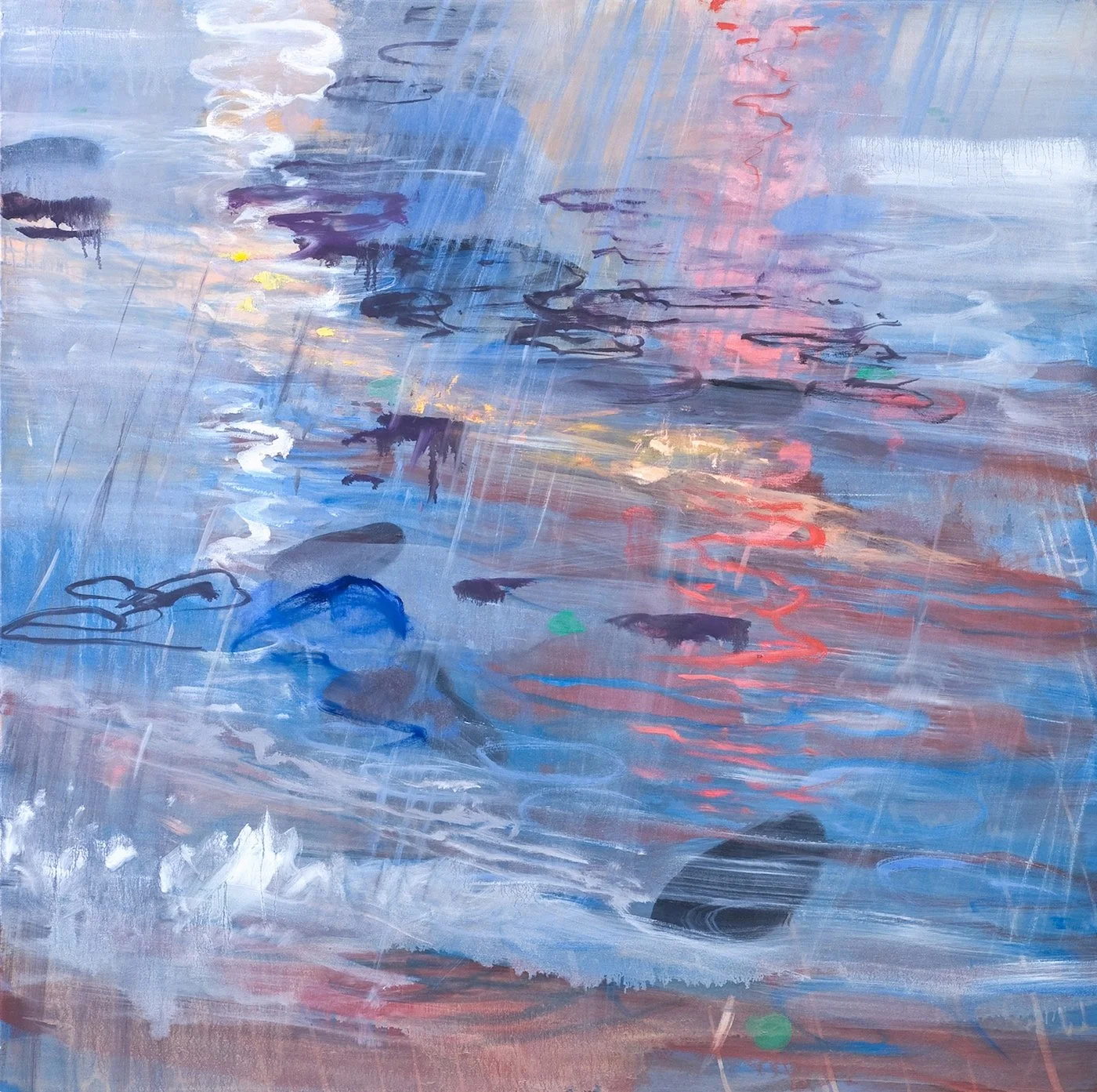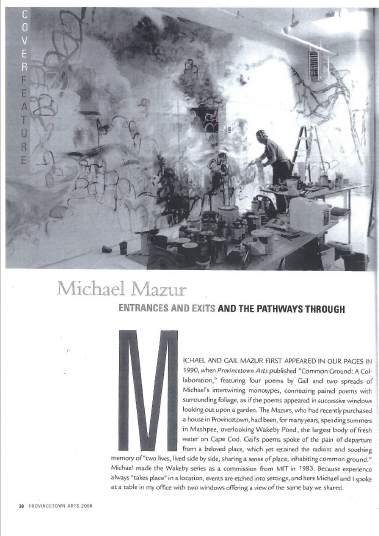News
From the Archive: The Last Testament of Michael Mazur (John Yau for Hyperallergic)
At the end of his life, Mazur wanted to evoke his passage into chaos, to compose his farewell. John Yau, November 11, 2018
Recently, I showed the film Fifi Howls from Happiness (2013) by Mitra Farahani to my undergraduate class. The film is about the last days of Bahman Mohassess (1931 – 2010), an Iranaian artist living in Rome in a hotel room that he seldom leaves. At one point, he tells an anecdote about the day Pablo Picasso died, followed by one about Salvador Dali lying on his deathbed, and sitting up and cursing a priest who has come to visit him. We see him laughing heartily after recounting each story. How to stage your departure as you shuck off your mortal coil was a subject that fascinated Mohassess, who knew his own end was fast approaching. Fahrani believes Mohassess wanted the film to be made, knowing it would document his death, and that it would be his final performance-cum-work-of-art.
A few days later, I went to see the exhibition Michael: Late Work, Rain and Flowers at Ryan Lee (October 25–December 22, 2018). The exhibition included five paintings, three of which were done the year he died, and in the small back gallery, 13 pen-and-ink drawings selected from the more than 100 Mazur did in the summer of 2009, when he had lost much of his mobility. Drawn on modest-sized sheets of paper, depicting cut flowers as well as plants and ferns growing in the artist’s backyard, they are dated between June 15 and August 17, 2009, the day before he died. Having looked at the entire set of drawings some years ago, I hope that someday they will be published together as a book, as they are a moving chronicle of a man who, facing the end of his life, spent each day saying hello and good-bye.
Michael Mazur, “Bay Rain III” (2009), oil on canvas, 48 x 48 inches (all images courtesy Ryan Lee Gallery)
Michael Mazur: Entrances and Exits and The Pathways Through
An interview by Christopher Busa
Excerpt:
Michael and Gail Mazur first appeared in our pages in 1990, when Provincetown Arts published “Common Ground: A Collaboration,” featuring four poems by Gail and two spreads of Michael’s intertwining monotypes, connecting paired poems with surrounding foliage, as if the poems appeared in successive windows looking out upon a garden. The Mazurs, who had recently purchased a house in Provincetown, had been, for many years, spending summers in Mashpee, overlooking Wakeby Pond, the largest body of fresh water on Cape Cod. Gail’s poems spoke of the pain of departure from a beloved place, which yet retained the radiant and soothing memory of “two lives, lived side by side, sharing a sense of place, inhabiting common ground.” Michael made the Wakeby series as a commission from MIT in 1983. Because experience always “takes place” in a location, events are etched into settings, and here Michael and I spoke at a table in my office with two windows offering a view of the same bay we shared.
And in an introduction to this issue, Michael Mazur wrote:
Studios are full of ghosts — ghosts of artists long gone, but not forgotten by relatives who hold on to their work spaces as memorials. When I visit them, I’m disconcerted by the sweet sorrow of their emptiness, their cleanliness and order. Yet the artist’s presence, nearly palpable, persists in the silent air. The studio is the laboratory, the workshop, the sanctuary and temple, the home and the retreat. It is the spiritual and physical core of the artist’s life. In 1964, Canadian pianist Glenn Gould gave up the concert stage and withdrew into his recording studio, where he invented a new way to present his interpretive performances. He described his recording studio as “womblike,” as a place “where time turns in upon itself,” where he could create art “with its own laws and its own liberties.”
Originally published in Provincetown Arts, volume 23 annual issue 2008-2009. Download a PDF version of the article.




